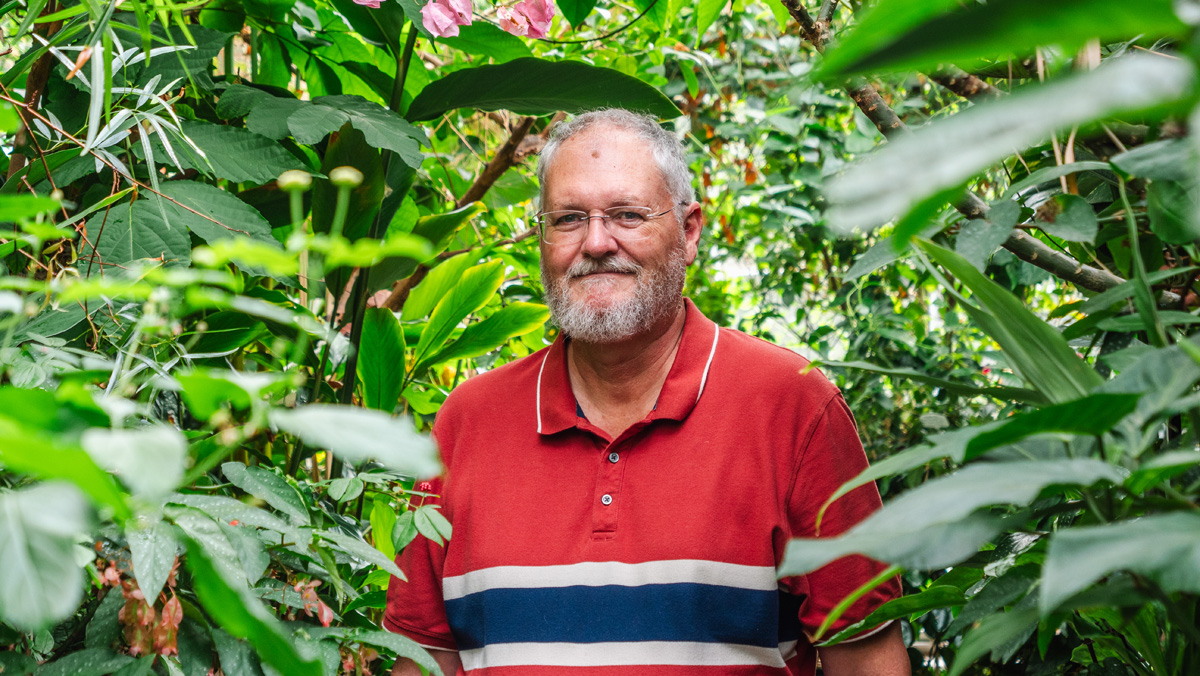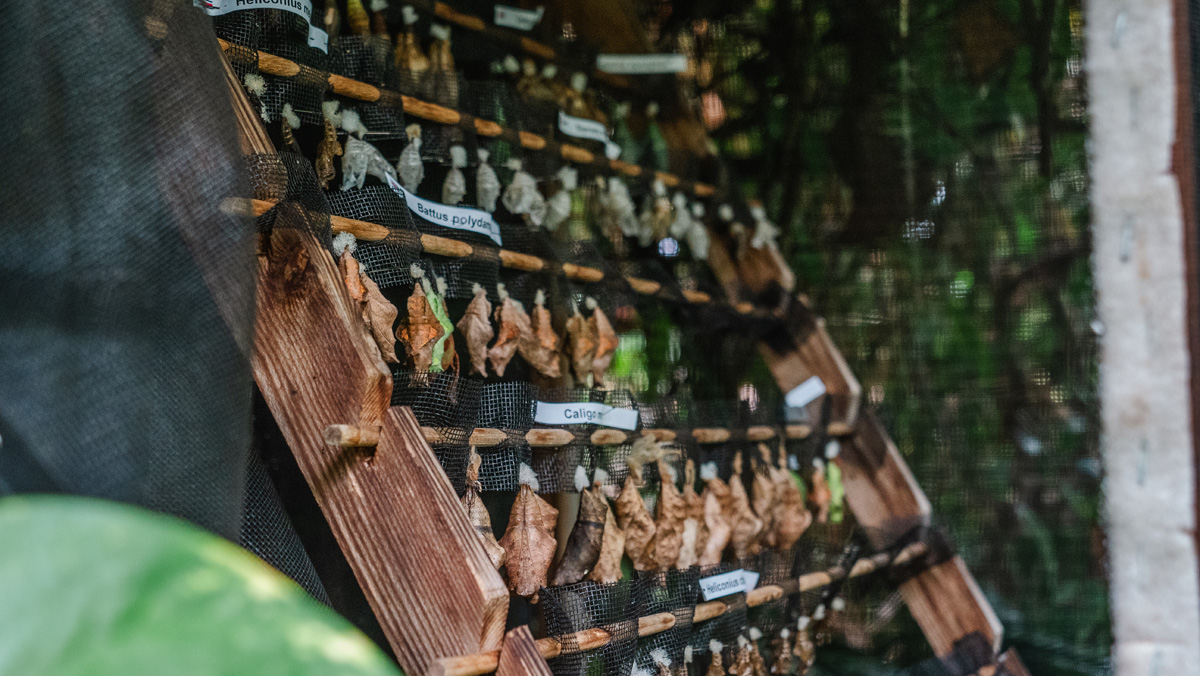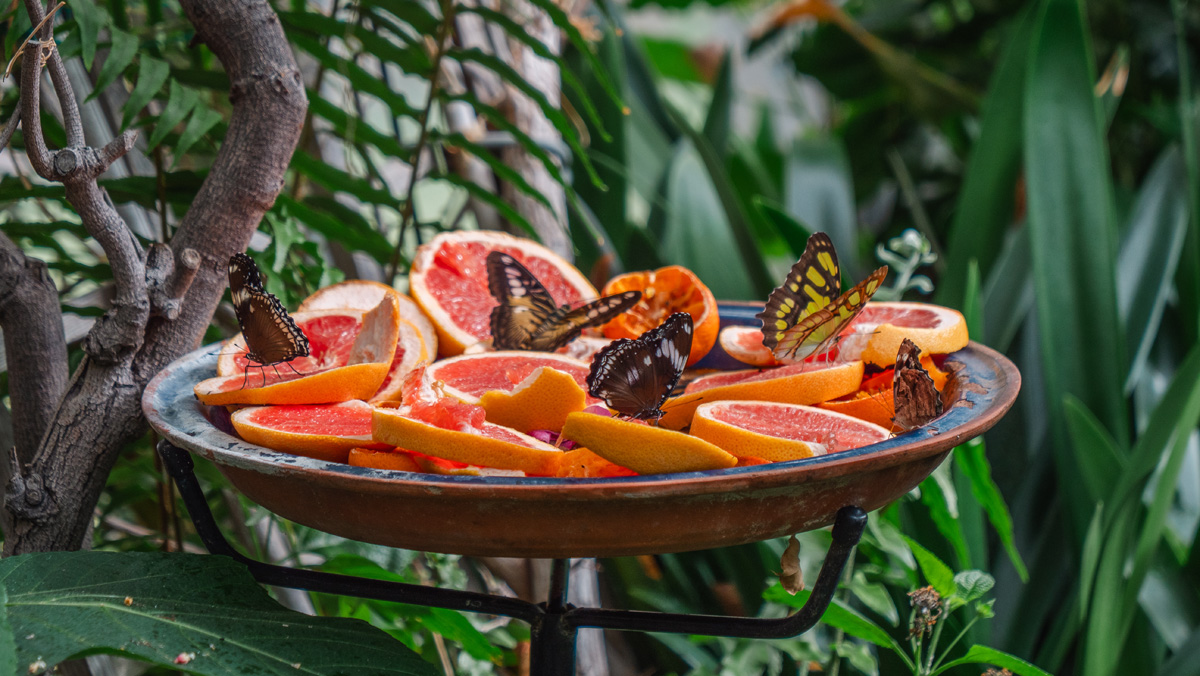The butterfly effect is a phenomenon whereby a small action has a profound impact on a large, complex system. Such as that fateful day back in 1998 when Carleton University greenhouse manager Ed Bruggink and his wife Joanna decided to go see an exhibit featuring flying butterflies in Montreal.
As they watched a couple hundred of the colourful insects flutter around the greenhouse, Bruggink realized that Carleton had the expertise and facilities to host a similar event. In spring 1999, with help from Carleton entomology researcher Jayne Yack, he pulled together the university’s first Biology Butterfly Show in one of the Nesbitt Building’s greenhouses, an exercise in organized chaos that has continued to evolve and expand.

Carleton University greenhouse manager Ed Bruggink
This fall, as the annual tradition celebrates its 25th birthday, Bruggink is reflecting on the thousands of students, volunteers, faculty, staff and community members who have been drawn to these delicate creatures over the years.
“It takes a huge team effort,” he says about all of the behind-the-scenes work that goes into hosting the show.
“Up to 1,200 or 1,300 people attend each day. They come because it’s free, fun and educational, and because they get to have an intimate experience with a beautiful insect.”
Bruggink has seen young children get taller as they attend the show every year and then come back as Carleton students. He’s seen university grads return as volunteers. And he’s seen so many people step up and offer support, like his late friend Jim des Rivières, a Carleton professor whose striking large-scale butterfly and moth images adorn the walls of Nesbitt, and local naturalist Rick Cavasin, whose photos form a mesmerizing display in the building’s lobby, helping keep the show in mind year-round.
“Our butterflies,” says Bruggink, “have brought so much positive attention to Carleton,”

Carleton Butterfly Show: An Impressive Showcase
A few weeks before the show begins, Bruggink orders about 1,300 pupae from suppliers as far flung as Costa Rica and Colorado. They’re shipped overnight and it takes a few hours to painstakingly pin them to dowel rods inside incubator-like cases in the Nesbitt Building nursery.
Two to three days later, the butterflies emerge and are brought to the greenhouse, where they’re released — “the fun part,” according to Bruggink — and feed on nectar-rich plants that he has primed with extra fertilizer.
“This is my showcase,” he says, “so I’m trying to impress.”
Entry to the show is free, although donations are requested to help cover the roughly $6,000 annual cost of buying pupae. And the Ottawa chapter of Let’s Talk Science, a national charity that supports STEM engagement, coordinates the school groups that visit and manages the volunteers without whom the show would not be possible.

“It’s a lot of moving parts and I love how it all comes together,” says Sue McKee, director of the Ottawa chapter. “Personally, my favourite thing is getting into the greenhouse before everyone arrives and being immersed in the butterflies.”
“The show is such a great opportunity to meet and interact with people,” says Carleton biochemistry student Igor Kabic, the local events coordinator for Let’s Talk Science. “As a Carleton student, I took like a butterfly and emerged from my chrysalis and become even more involved in university community.
“Seeing children’s and adult’s faces light up when a butterfly lands on their finger, being the ‘chosen one’ that a butterfly is deciding to spend their time with, is one of the best experiences at the show. A moment of wonder and intrigue.”

End of the Ed Era
The 2024 butterfly show, from Oct. 5 to 13, is special not only because it’s the 25th anniversary, but also because it will be Bruggink’s final year at the helm. He will be retiring next spring after 44 years at Carleton.
“Oh gosh, we will miss him!” says McKee.
“He’s not just the keeper of the butterflies, he’s become our friend. Whoever takes on his position has big shoes to fill!”
The university’s butterfly event is unique, Bruggink says, because similar shows are run by businesses, while Carleton is in the business of education.

Carleton’s butterflies tend to receive a lot of media coverage. Because there are so many negative items on the news, Bruggink thinks there’s an appetite for happy stories.
Which, in a sense, is why people come back every year — to lose themselves in the colourful blur of butterflies.
Asked if he has a favourite butterfly, Bruggink answers immediately: the blue morpho. This response is kind of ironic. A man who shuns the spotlight, despite his tireless contributions, loves this particular butterfly because it’s the flashiest.
“There are so many to choose from, but it’s the top of the list for me,” he says.
“When it opens up, you see this iridescent blue that shimmers in the sunlight. It’s magical.”